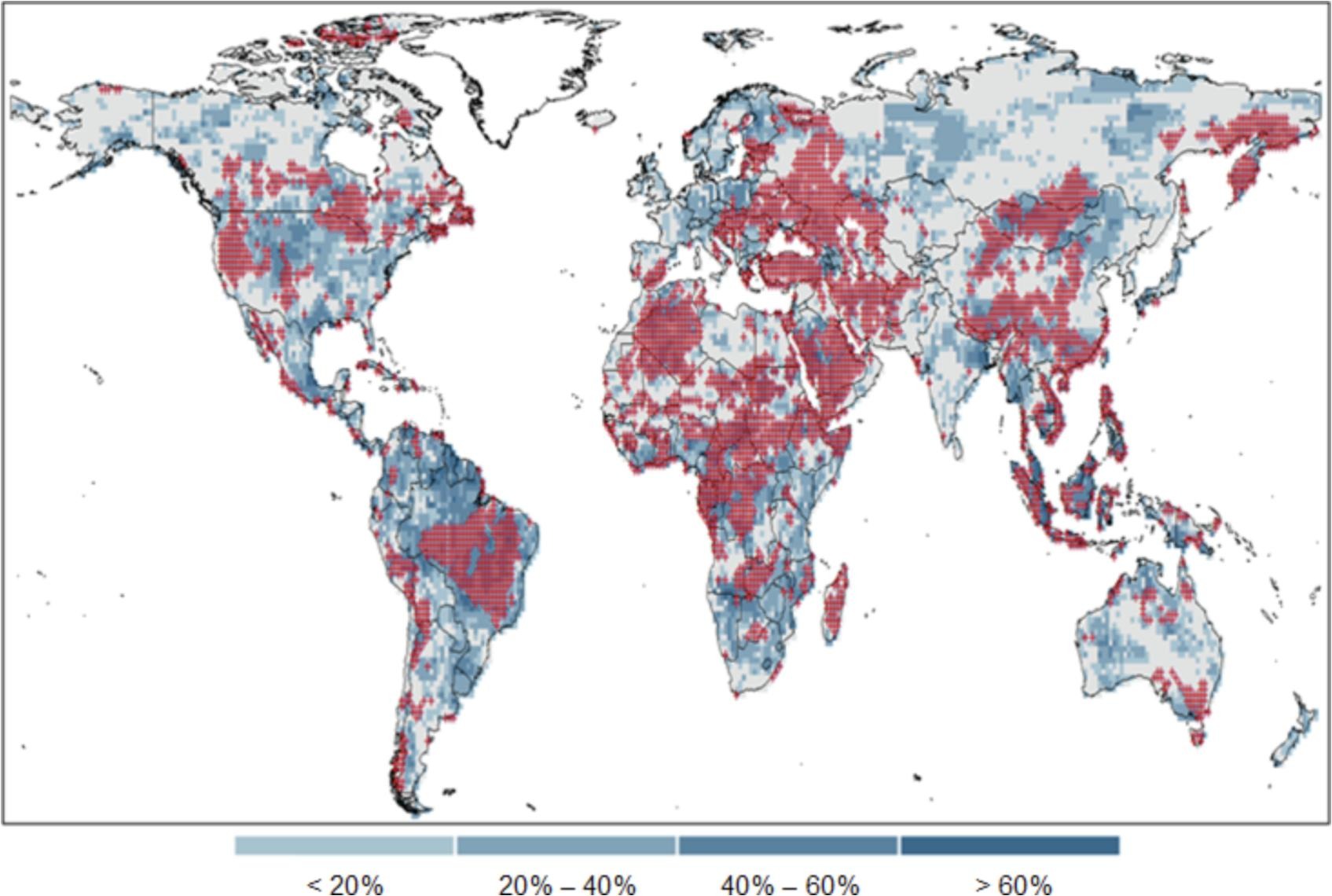
Weather extremes have become more frequent and intensive since the 1950s, and international hydrology experts are using new technology to map land areas subject to hotter, dryer conditions under climate change.
Flinders University experts have worked with Chinese and other Australian researchers on three studies to assess the effects of droughts on heatwaves, vegetation health and soil salinity.
The , led by former Flinders University PhD Dr Ajaio Chen, used advanced computer modelling to divide a world map into red and blue regions to reflect areas worst hit by global warming compared to drought-induced local soil moisture deficit.
Two other studies, led by China Agriculture University scientists, worked on improving the use of hyperspectral remote sensing technology to monitor , and on health on a large scale.
“These two studies provide methods for assessing the large-scale effects of global warming and increasing rainfall variability on hot extremes, aridification, soil degradation and food security in order to plan for future resilience of our environment and agricultural systems,” says Flinders University Associate Professor Huade Guan, a chief investigator from Australia’s ³Ô¹ÏÍøÕ¾ Centre for Groundwater Research and Training.
The first study shows that while some regions become more frequently hit by hot extreme occurrences due to global warming (in red), others are more affected by the strong year-on-year variability in root zone soil moisture (in blue, see map below).
 The areas more likely to suffer from global warming induced heat extremes are located in dry regions (such as the Sahara), mountain ranges (e.g., the Andes in South America, the Rockies in North America), and plateaus (e.g., the Brazilian Plateau and the Mongolian Plateau), where interannual variability of root zone moisture is generally smaller due to water deficiency, steep topography, and/or low temperature.
The areas more likely to suffer from global warming induced heat extremes are located in dry regions (such as the Sahara), mountain ranges (e.g., the Andes in South America, the Rockies in North America), and plateaus (e.g., the Brazilian Plateau and the Mongolian Plateau), where interannual variability of root zone moisture is generally smaller due to water deficiency, steep topography, and/or low temperature.
Vegetation clearance and ocean-atmosphere phenomena also influenced the number of hot days.
Meanwhile, targeted use of large-scale soil salinity monitoring could be used for mitigating the worsening effects of hotter drier conditions, says co-author Associate Professor Guan.

The second study developed a new ‘soil spectral reflectance exponential model’ to improve the use of soil spectrometry for a quick assessment of soil salinity in large scale.
“It can be useful for monitoring soil salinity on flood plains and on irrigation crop fields,” he says.
“Soil salinity affects about 23% of cultivated land, especially in arid and semi-arid irrigated agricultural areas and is one of the main factors restricting sustainable development of agriculture.”
The first study, (2022) by Ajiao Chen, Huade Guan and Okke Batelaan, has been published in the Journal of Hydrology, Elsevier, DOI 10.1016/j.jhydrol.2022.128720.
The second study, (2022), by Xi Huang, Tiecheng Bai, Huade Guan, Xiayong Wei, Yali Wang and Xiaomin Mao has been published in Remote Sensing DOI: 10.3390/rs14246396.
Also see (2023) by Zhen Weng, Jun Niu, Huade Guan and Shaozhong Kang, has been published in Science of the Total Environment DOI: 10.1016/j.scitotenv.2022.160300.








